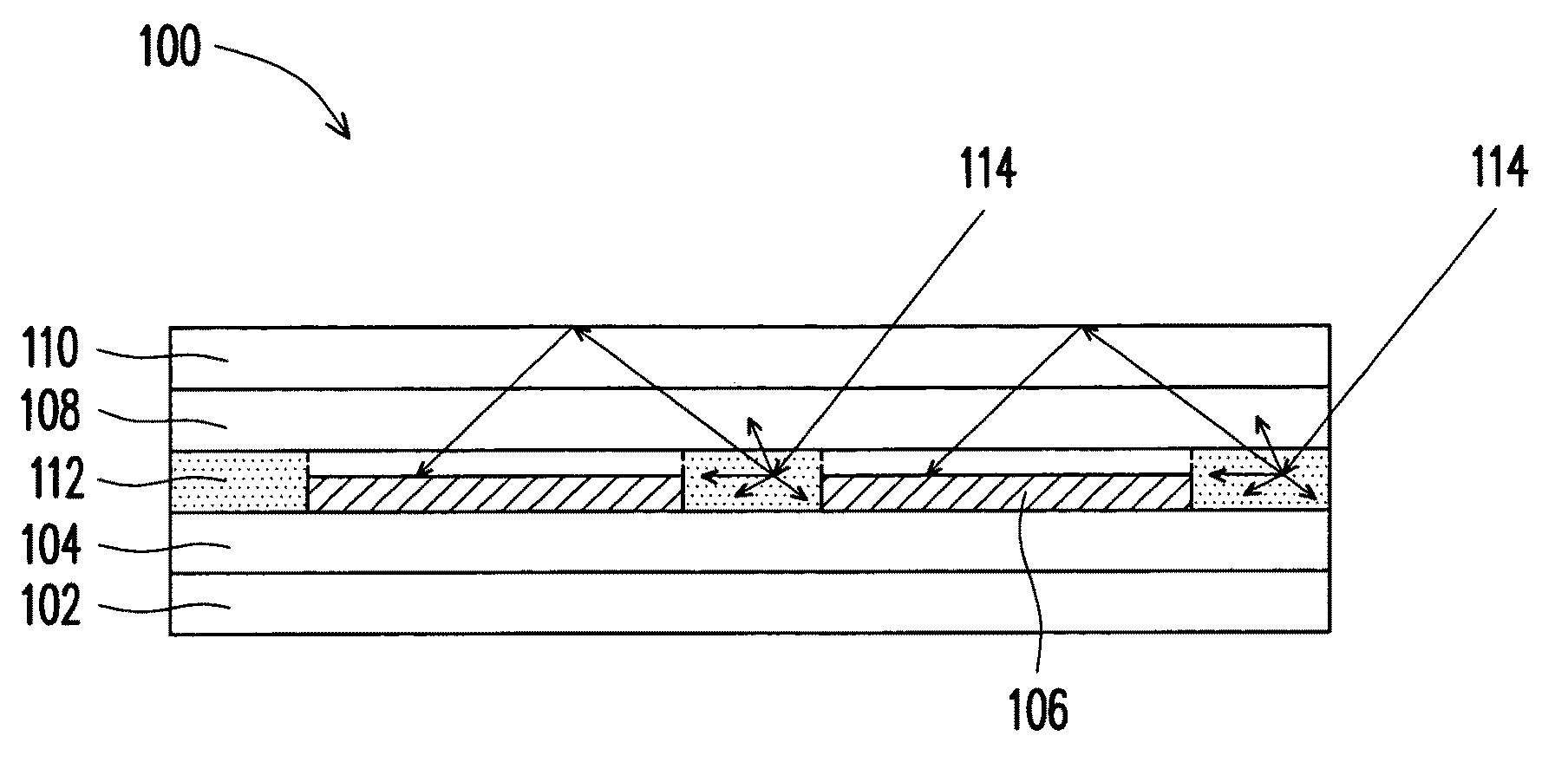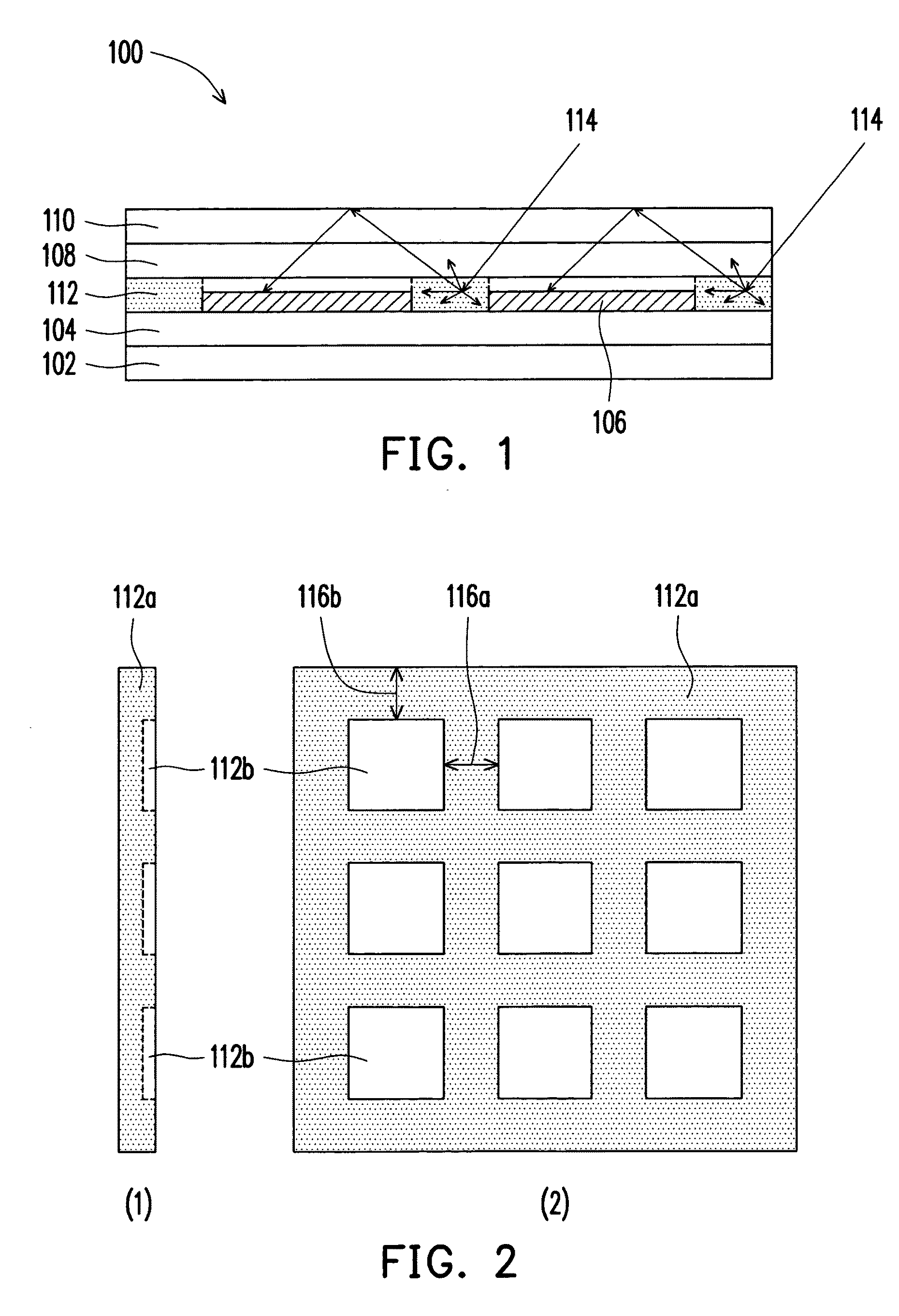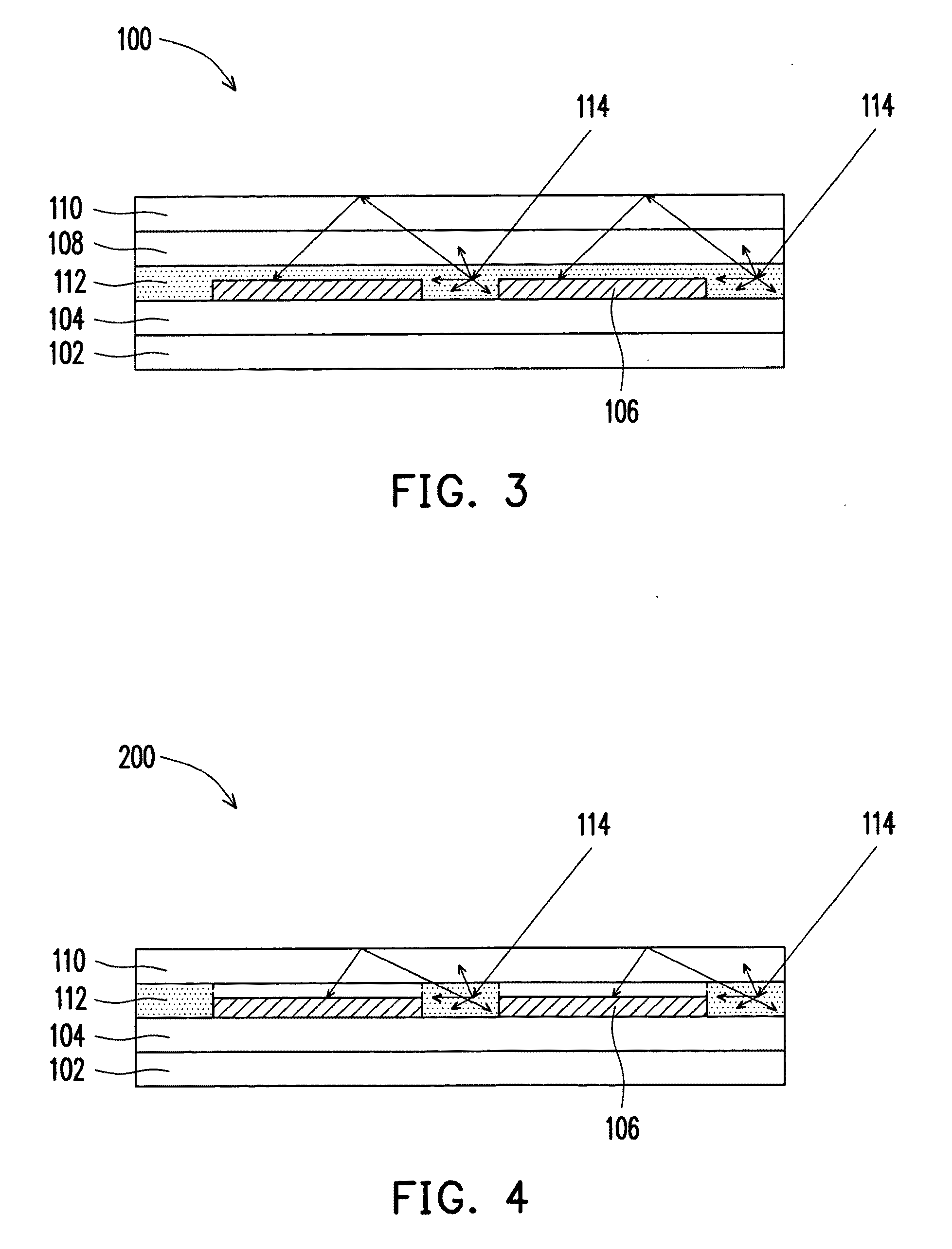Encapsulant material, crystalline silicon photovoltaic module and thin film photovoltaic module
a technology of crystalline silicon and photovoltaic modules, applied in the direction of pv power plants, other domestic articles, synthetic resin layered products, etc., can solve the problems of unfavorable applications of above-ground methods in see-through type thin film photovoltaic modules, and achieve the effect of improving light trapping and encapsulating light reflection
- Summary
- Abstract
- Description
- Claims
- Application Information
AI Technical Summary
Benefits of technology
Problems solved by technology
Method used
Image
Examples
first embodiment
[0049]FIG. 1 is a schematic cross-sectional view showing a crystalline silicon photovoltaic module according to the first embodiment of the present invention.
[0050]Referring to FIG. 1, a crystalline silicon photovoltaic module 100 according to the first embodiment includes a first backsheet 102, a first encapsulant layer 104, a plurality of crystalline silicon solar cells 106, a second encapsulant layer 108 and a transparent substrate 110 sequentially stacked. The crystalline silicon photovoltaic module 100 further includes an encapsulant material with porous structure 112 disposed between the crystalline silicon solar cells 106 and between the first encapsulant layer 104 and the second encapsulant layer 108 to collect light passing through the crystalline silicon solar cells 106 and to enhance power conversion efficiency of the crystalline silicon photovoltaic module 100. An average pore diameter in the encapsulant material with porous structure 112 is between several hundreds of n...
second embodiment
[0057]FIG. 4 is a schematic cross-sectional view showing a crystalline silicon photovoltaic module according to the second embodiment of the present invention. The same reference numerals as those according to the first embodiment are used to represent the same components. According to the second embodiment, a crystalline silicon photovoltaic module 200 includes a first backsheet 102, a first encapsulant layer 104, a plurality of crystalline silicon solar cells 106 and a transparent substrate 110 sequentially stacked. The crystalline silicon photovoltaic module 200 further includes an encapsulant material with porous structure 112 disposed between the crystalline silicon solar cells 106 and between the first encapsulant layer 104 and the transparent substrate 110, thereby replacing the second encapsulant layer according to the first embodiment, so as to collect light passing throughpassing through the crystalline silicon solar cells 106 and to enhance power conversion efficiency of ...
third embodiment
[0058]FIG. 5 is a schematic cross-sectional view showing a crystalline silicon photovoltaic module according to the third embodiment of the present invention. The same reference numerals as those according to the first embodiment are used to represent the same components.
[0059]According to the third embodiment, in a crystalline silicon photovoltaic module 300, a plastic thin film structure 300 is disposed between the crystalline silicon solar cells 106 and between the first encapsulant layer 104 and the second encapsulant layer 108. The plastic thin film structure 300 may be a foamable polymeric material with high glass transition temperatures, and is disposed using an additional stacking method between the crystalline silicon solar cells 106 and between the first encapsulant layer 104 and the second encapsulant layer 108.
PUM
| Property | Measurement | Unit |
|---|---|---|
| reflectance | aaaaa | aaaaa |
| light reflectance | aaaaa | aaaaa |
| light reflectance | aaaaa | aaaaa |
Abstract
Description
Claims
Application Information
 Login to View More
Login to View More - R&D
- Intellectual Property
- Life Sciences
- Materials
- Tech Scout
- Unparalleled Data Quality
- Higher Quality Content
- 60% Fewer Hallucinations
Browse by: Latest US Patents, China's latest patents, Technical Efficacy Thesaurus, Application Domain, Technology Topic, Popular Technical Reports.
© 2025 PatSnap. All rights reserved.Legal|Privacy policy|Modern Slavery Act Transparency Statement|Sitemap|About US| Contact US: help@patsnap.com



